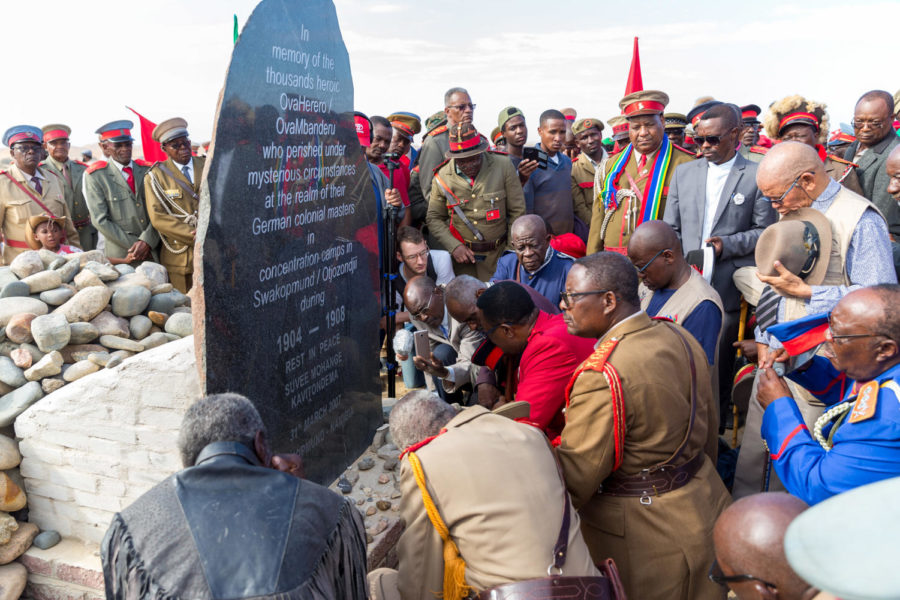A Forgotten Genocide: Reparations Over 100 Years Later
The German government’s offer of reparations to Namibia is simply not enough, and it leaves many unanswered questions.
A reparation walk that took place in Namibia in 2019
June 6, 2021
While many people have dubbed the Armenian genocide the “first genocide of the 20th century,” few Americans know about another genocide that actually began 11 years prior: the Namibian genocide.
It is tragically fitting that the Namibian genocide is sometimes referred to as the “forgotten genocide,” as it is rarely brought up by people outside of the country. This atrocity waged by the German Empire beginning in 1904 in German South West Africa — modern day Namibia — was responsible for the deaths of 10,000 members of the Nama ethnic group, as well as up to 100,000 Herero people. Part of the reason that many have never heard of this event or know little to nothing about it is the German government’s deliberate attempts to cover it up and not officially recognize it until very recently. The genocide was finally recognized on the 28th of May, when foreign minister Heiko Maas admitted that the crimes committed during the 20th century caused “immeasurable suffering” and stated that the country would offer a fund equalling about $1.34 billion to Namibia as an apology gesture. Maas also claimed that these events would be “called what they were from today’s perspective,” correctly labeling it as a “genocide”.
Given that most people have very limited knowledge of the genocide, I feel it is appropriate to give a brief description of exactly what took place in the region between 1904 and 1908. The German Empire had been taking land from the indigenous people of Namibia, and of course many of them resisted such theft. The two particular groups that resisted the most and were mainly targeted by the German soldiers where Herero and Nama people. They were shot, hanged, and left to die in concentration camps throughout this span of four years, leading to over 100,000 deaths. This of course, also greatly affected their ancestors, in terms of land possession and wealth, and they have since been relaying the stories of gruesome killings and land theft during the genocide and pushing for reparations in some form.
While on the face of it Germany’s modern-day effort to recognize and compensate Namibia for their despicable actions of the past may seem like a good thing, there is much more to this issue than simple cash payments and lip service, and many have been left less than impressed with the proposal. While President Hage Geingob accepted the gesture with open arms, stating that recognition of the genocide was “the first step in the right direction,” many in Namibia are much more hesitant to do the same. Many representatives from the respective groups, as well as Namibians as a whole, have labeled the gestures as purely symbolic and nothing more than a clever PR move from the German government. Many believe that much more must be done to rectify the history of colonialism and the great inequality caused by the Germans in Namibia.
While the $1.34 billion that is set to be given is certainly considerably better than the insultingly low $11.4 million the German government had reportedly offered late in 2020, it is hard to put a price on the effects of a genocide that took so many lives and left many more displaced to this very day. Money alone will not solve the deep issues created by the colonialism of the German Empire, and it must also be asked where exactly the money will be used. Will it actually go towards the Herero and Nama people, who have been directly affected by the genocide and are without their native land, or will it be used to help white descendants of settlers accumulate even more wealth and land? This is a question that will be answered in the future, but what is clear now is that much more must be done and that this program is simply not enough.
The shocking truth is that 70% of farmland is currently owned by whites in Namibia, despite the fact that whites make up just 6% of the total population. Whether or not the money given to Namibia is enough, the fact remains that serious reform must be done to restore the land back to the indigenous population and fight the deep inequality that exists as a result of colonialism and genocide.


